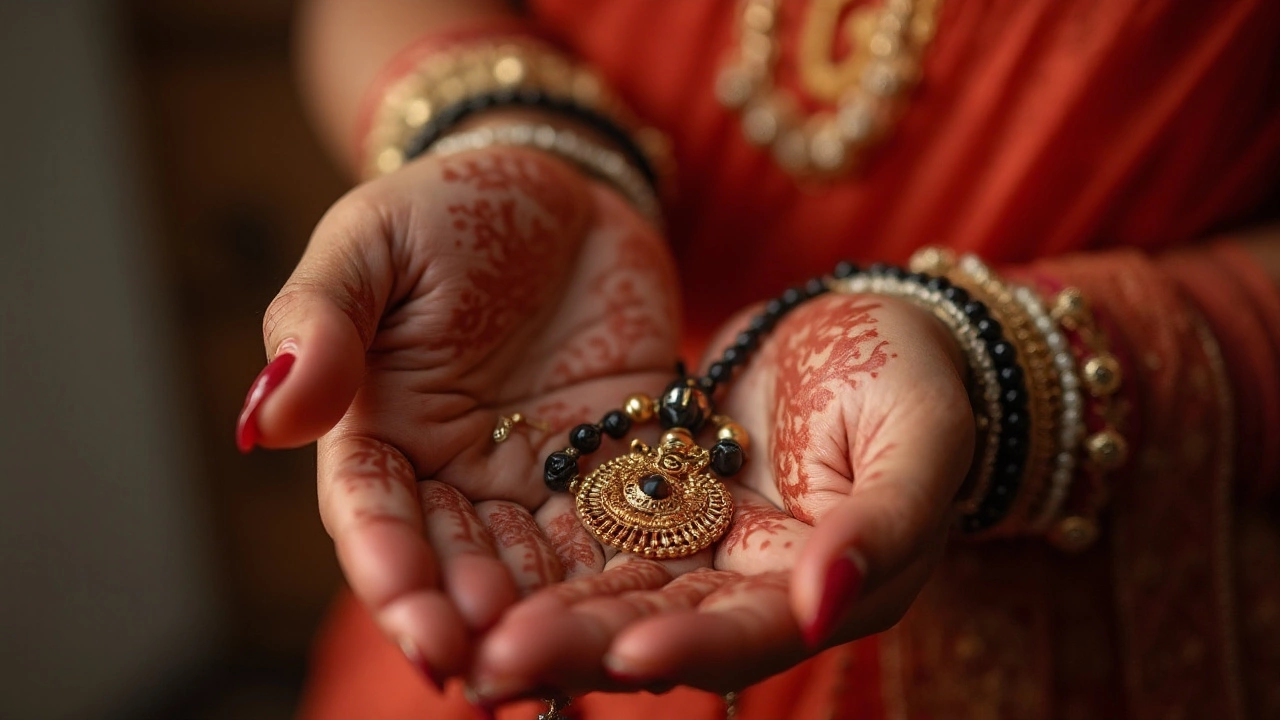
Explaining what 'mangalsutra' means in English, how it translates culturally, and why it holds deep meaning for married women.
When you think about Indian jewelry, the vast array of ornaments that people across India wear – necklaces, bangles, rings, earrings, and more – you’re entering a mix of culture, ceremony, and everyday fashion, you quickly see why it matters. Also known as Indian ornaments, this category blends ancient rituals with fresh design ideas, making each piece more than just an accessory.
One of the most iconic pieces is the Mangalsutra, a necklace that symbolizes marital commitment in Hindu tradition. It isn’t just a pretty chain; it carries meaning about who ties it, who gifts it, and how families celebrate the union. Modern mangalsutras now offer variations in gold purity, gemstone accents, and even adjustable lengths, so the tradition stays relevant for young couples who want both symbolism and style.
Gold remains the backbone of Indian jewelry, especially pieces stamped with 750, the hallmark indicating 18‑karat gold, or 75% pure gold. Knowing the stamp helps you judge value, durability, and how the piece will look over time. Whether you buy a simple gold chain or an elaborate temple necklace, the purity level influences price, maintenance, and how well the jewelry fits daily wear or special occasions.
Diamonds also play a huge role, especially in bridal sets and statement pieces. A diamond, a precious stone prized for its sparkle and hardness, often appears alongside gold in Indian designs. Understanding cut, clarity, and carat helps you pick a stone that shines without breaking the bank. Recent trends show a rise in lab‑grown diamonds, offering the same brilliance at a lower cost and with a smaller environmental footprint.
Another favorite is the nose pin, a small decorative piece worn in the nostril, popular in many Indian regions. The right shape, size, and metal can highlight facial features and complement traditional outfits. Style guides suggest matching the nose pin’s metal with your outfit’s gold or silver tones, and choosing designs that suit your face shape for a balanced look.
All these elements – mangalsutra customs, gold purity marks, diamond choices, and nose pin styles – are linked by a common thread: Indian jewelry is a living expression of identity, celebration, and personal taste. Below you’ll find articles that break down each topic, compare prices across markets, and give you actionable advice whether you’re buying for a wedding, a daily look, or an investment.
Ready to dive deeper? The collection that follows will walk you through the latest trends, practical buying guides, and cultural insights so you can make confident choices and enjoy the beauty of Indian jewelry every day.

Explaining what 'mangalsutra' means in English, how it translates culturally, and why it holds deep meaning for married women.
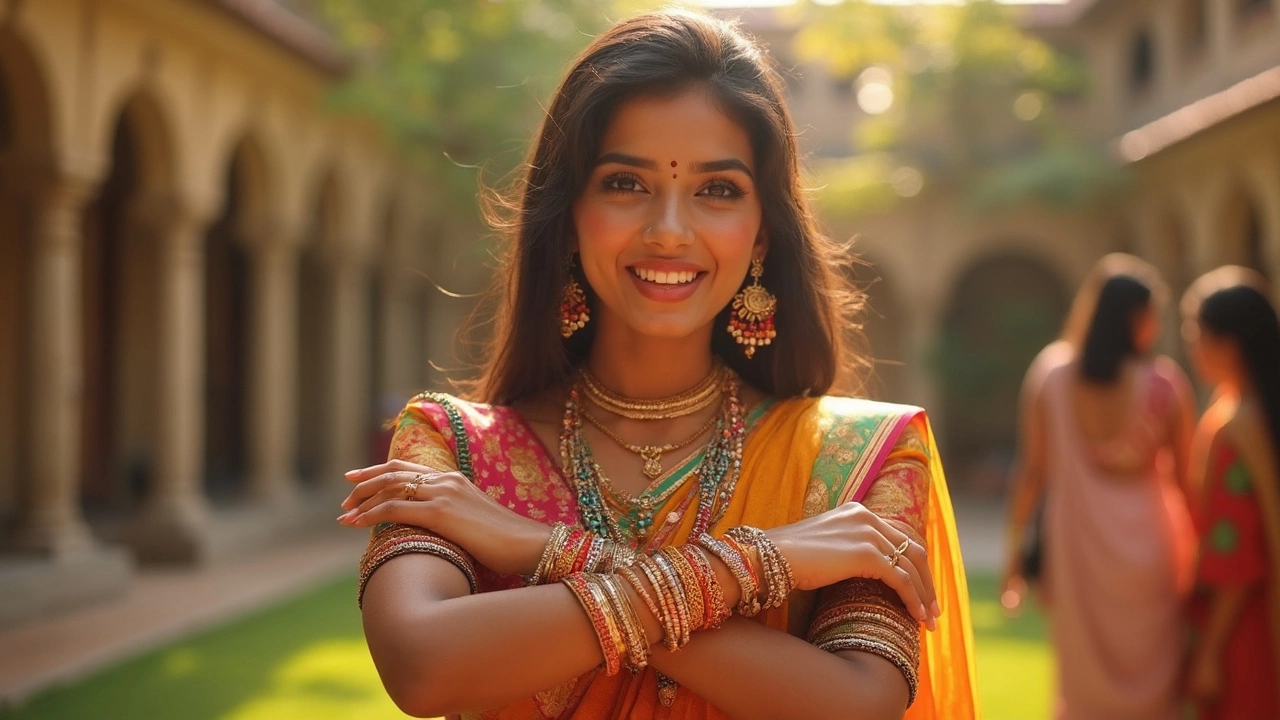
Curious about wearing Indian bangles on both arms? Get real tips on meaning, style hacks, cultural myths, and how to rock the bangle look your own way.
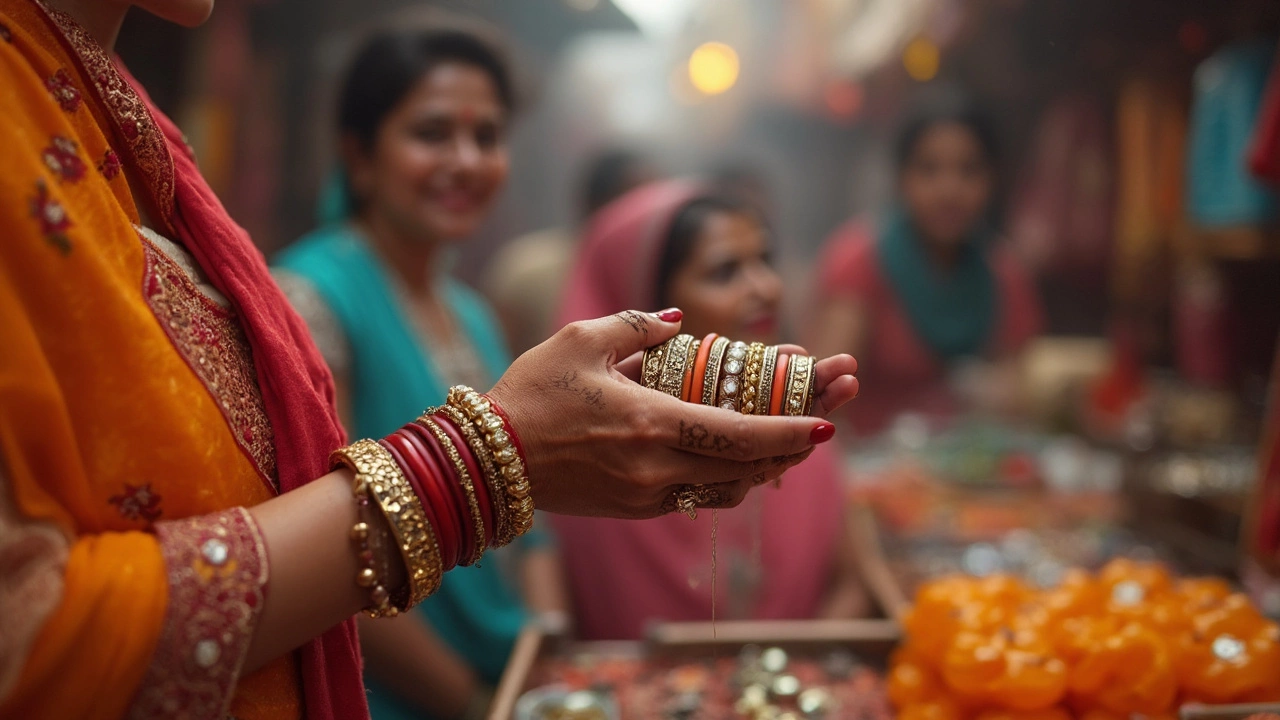
Bangles in India aren’t just shiny arm candy—they’re woven into life’s biggest moments and smallest habits. This article cuts through the myths and gives you the real deal on what bangles mean, where the traditions come from, and why they matter today. You’ll get insider tips for choosing the perfect pair, plus fun facts that show how bangles connect generations. From weddings to daily life, discover why these circles of glass and metal are so much more than simple accessories. Planning to buy or gift bangles? Read this before you shop.
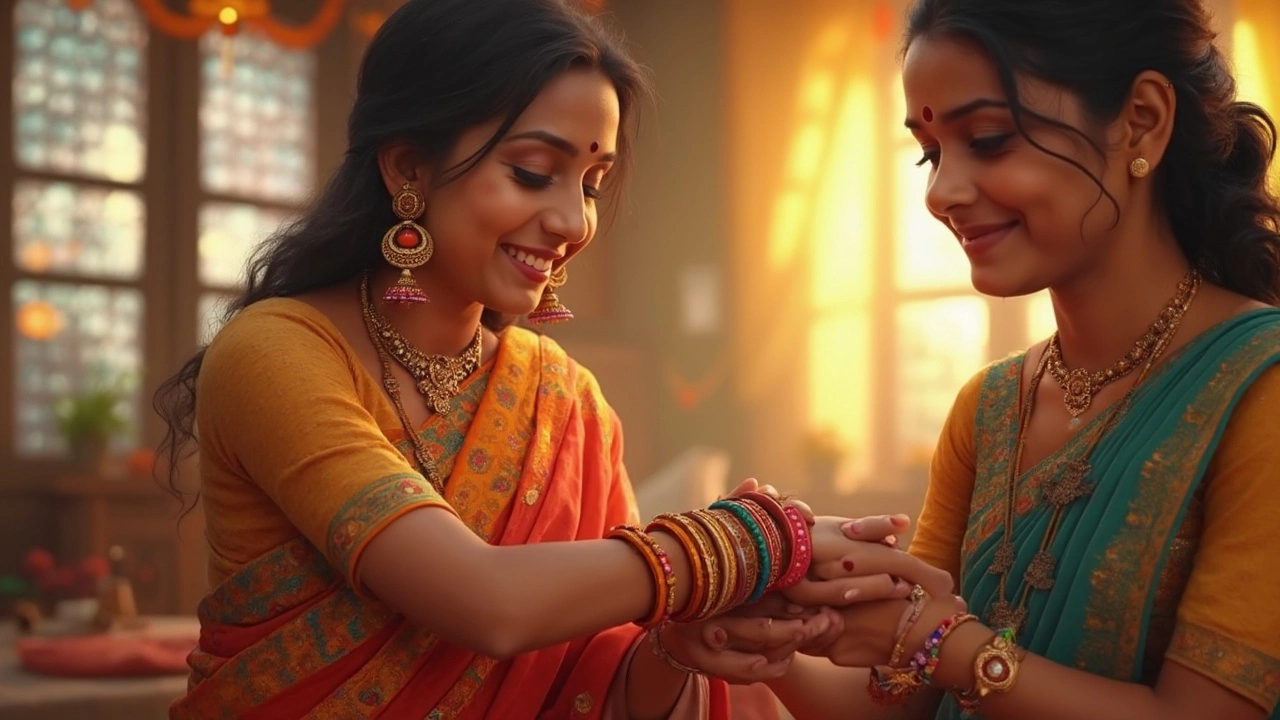
Ever wondered why women in India wear seven bangles together? The tradition isn’t just about looking pretty—it packs meaning, luck, and deep cultural vibes. This article breaks down the reasons behind the seven bangles, from regional customs to what they symbolize for different occasions. Expect easy explanations, fun facts, and weekly wear tips. Plus, learn how to keep your bangles looking cool and meaningful in today’s world.
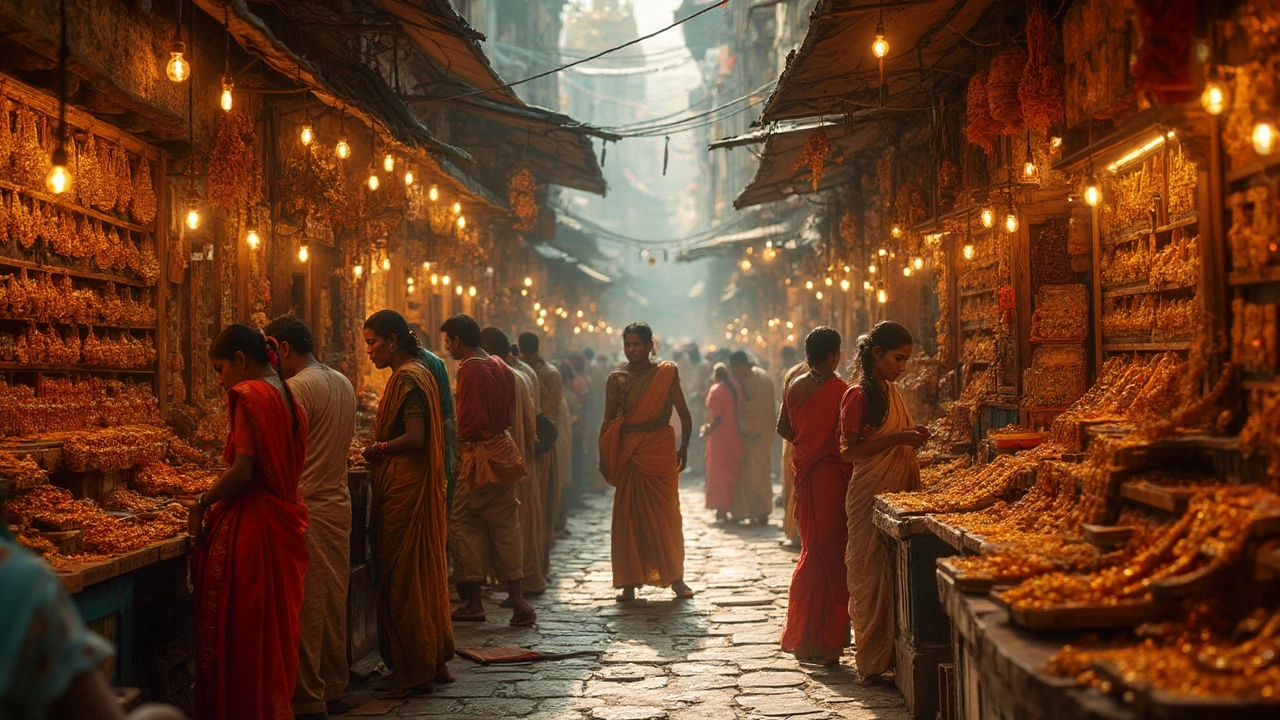
Curious about where India's most talked-about jewelry comes from? This article covers the Indian city that stands out for its jewelry legacy, with a deep look into temple jewellery. You'll find handy tips for spotting the best pieces and info on what makes this city a hotspot. Whether you’re a collector or just shopping for a wedding, you’ll get practical suggestions about where to go, what to look for, and how to find authentic gems. Read on to discover how age-old designs shape India's jewelry scene.
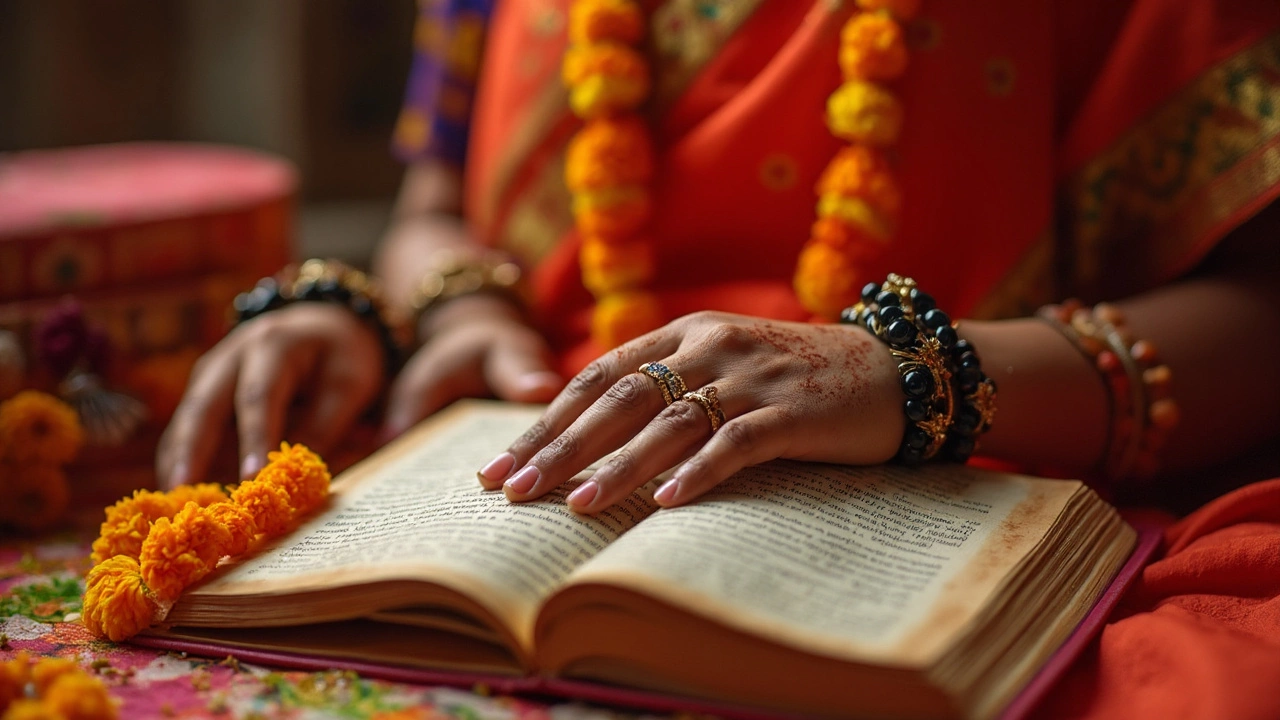
Black bangles aren’t just for style—they pack a load of meaning in Indian culture. People wear them for protection, as markers of tradition, or even as a quiet nod to personal milestones. This article breaks down where these beliefs come from, how different communities see them, and tips if you’re thinking of adding black bangles to your everyday look. We’ll also cut through any myths you might’ve heard. If you’ve ever wondered what slipping on a black bangle really says about you, you’re in the right place.
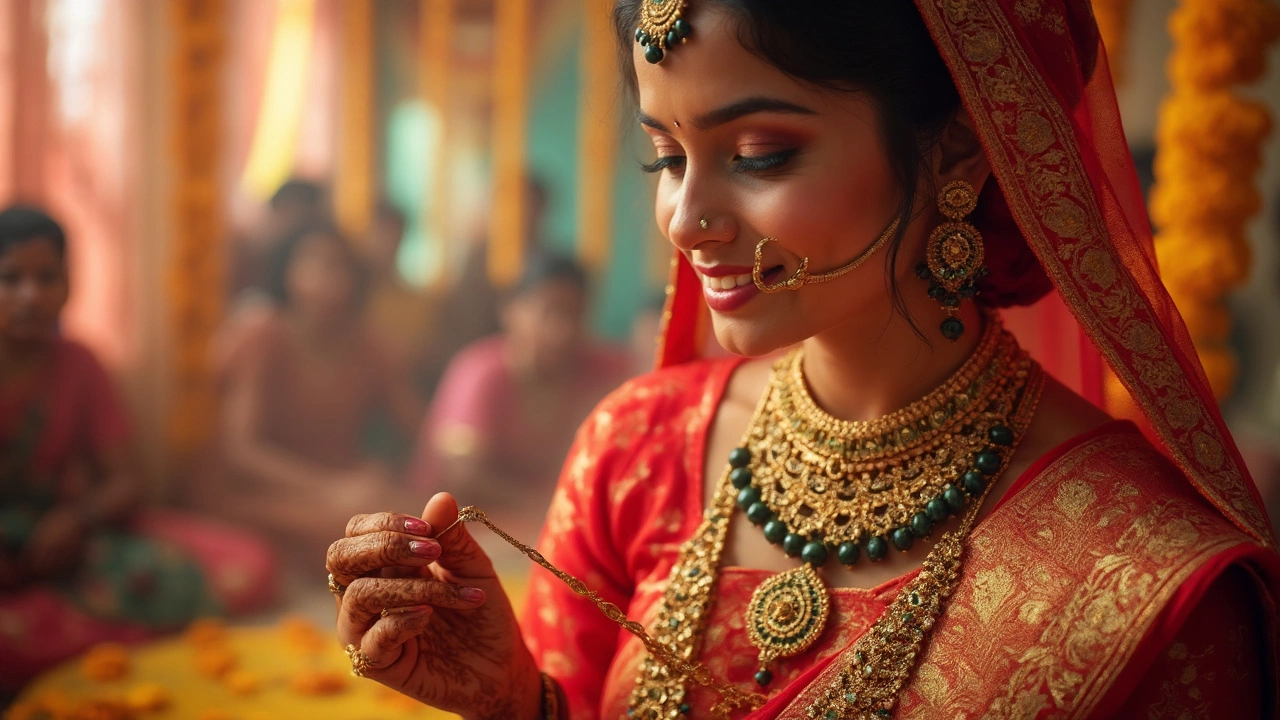
The black beads in a mangalsutra aren't just a design choice—they carry deep meaning in Indian culture. This article digs into why these tiny beads matter so much, how they're believed to protect relationships, and the science behind the tradition. You'll get practical tips about wearing and choosing the right mangalsutra, plus some surprising facts you probably didn't know.
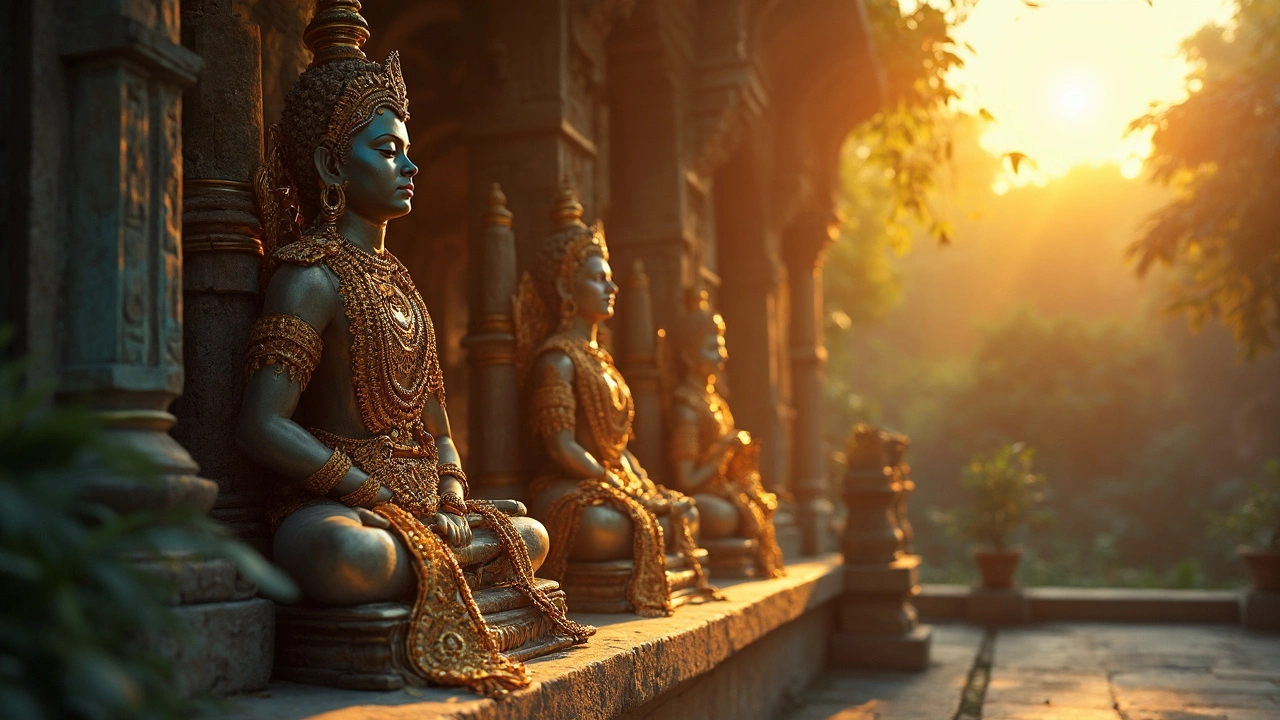
Temple jewelry, with its rich history and intricate designs, is a unique and cherished aspect of Indian culture. Originally crafted for adorning deities, these exquisite pieces have found their way into modern fashion. Featuring gold and precious gems, temple jewelry is renowned for its ornate craftsmanship. In this article, we delve into its origins, significance, and enduring appeal.
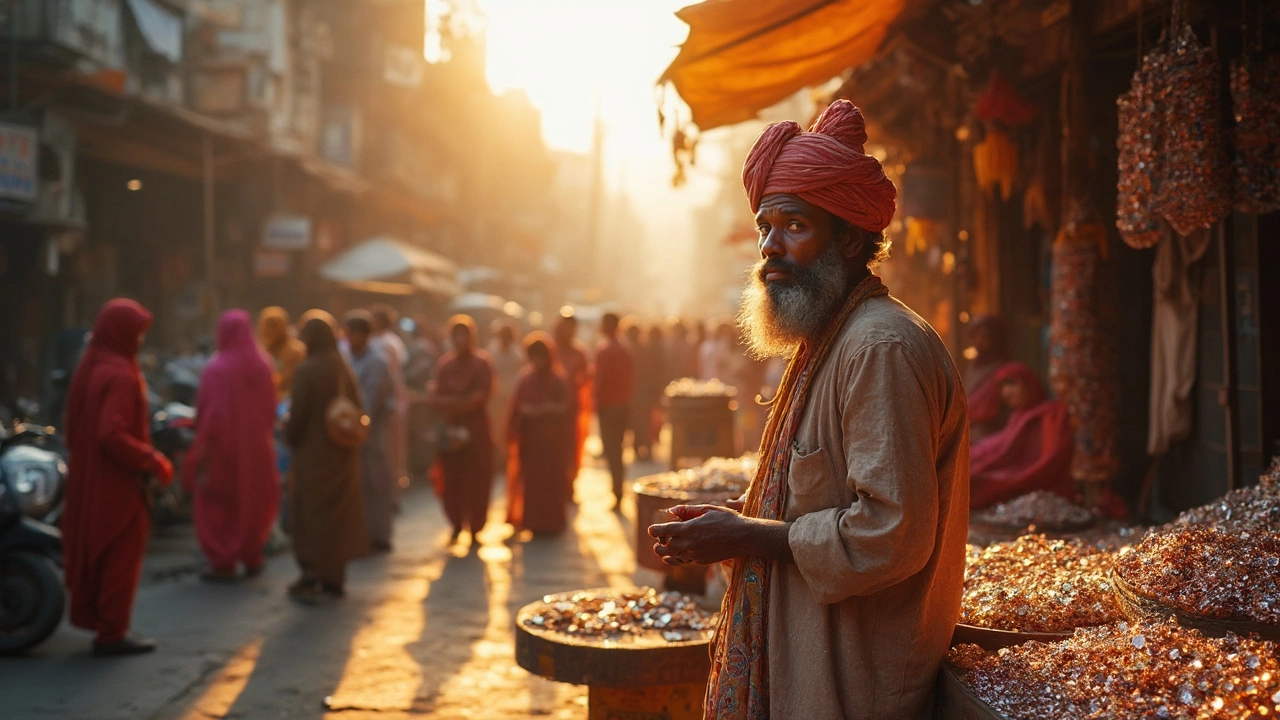
Dive into Surat, India's renowned Diamond City. Discover why Surat holds this sparkling title and explore its bustling diamond industry. Learn how this city became a global power in diamond processing and gain insights into the vibrant world of diamond rings in India. Uncover interesting facts and practical tips on buying diamonds.
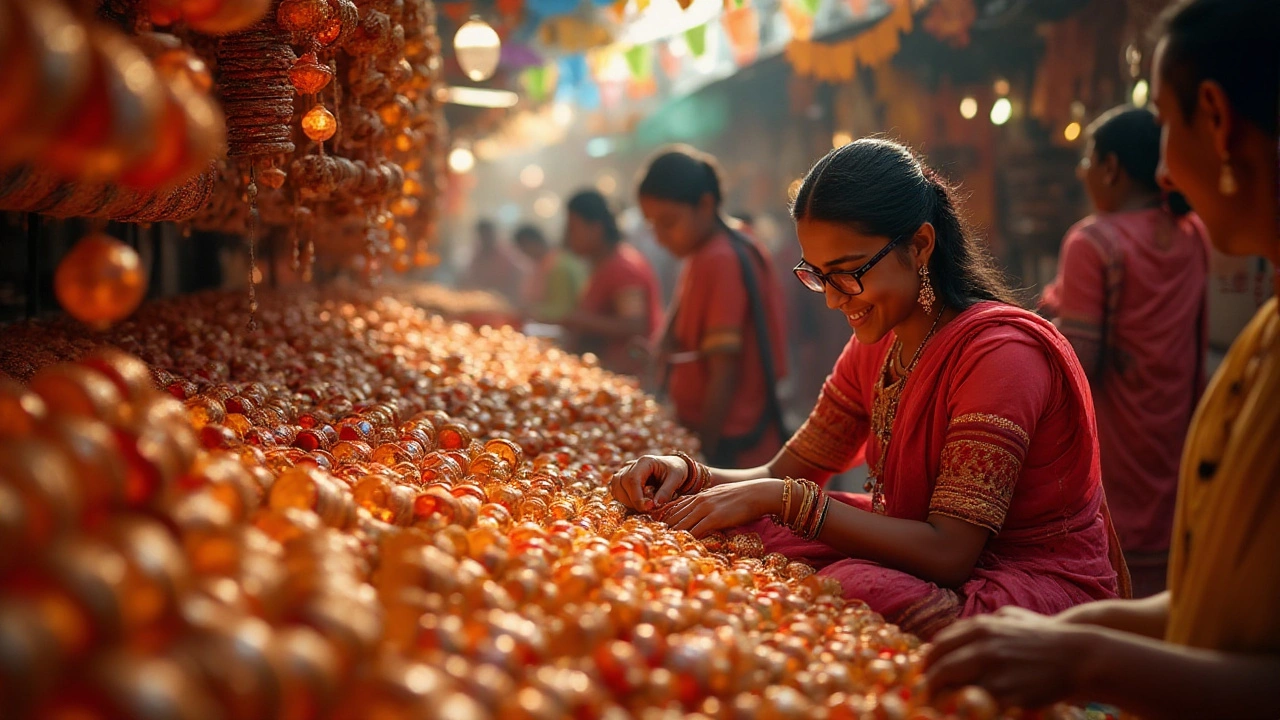
Bangles and kada are integral elements of Indian jewelry, yet they each carry distinct cultural and stylistic significance. Bangles are typically characterized by their delicate, circular design, frequently embellished with intricate patterns or inlaid with stones. In contrast, kada are more robust, often featuring thicker bands and simplistic designs, symbolizing strength and tradition. Understanding the differences between these two beautiful accessories can help one appreciate the cultural heritage they represent.
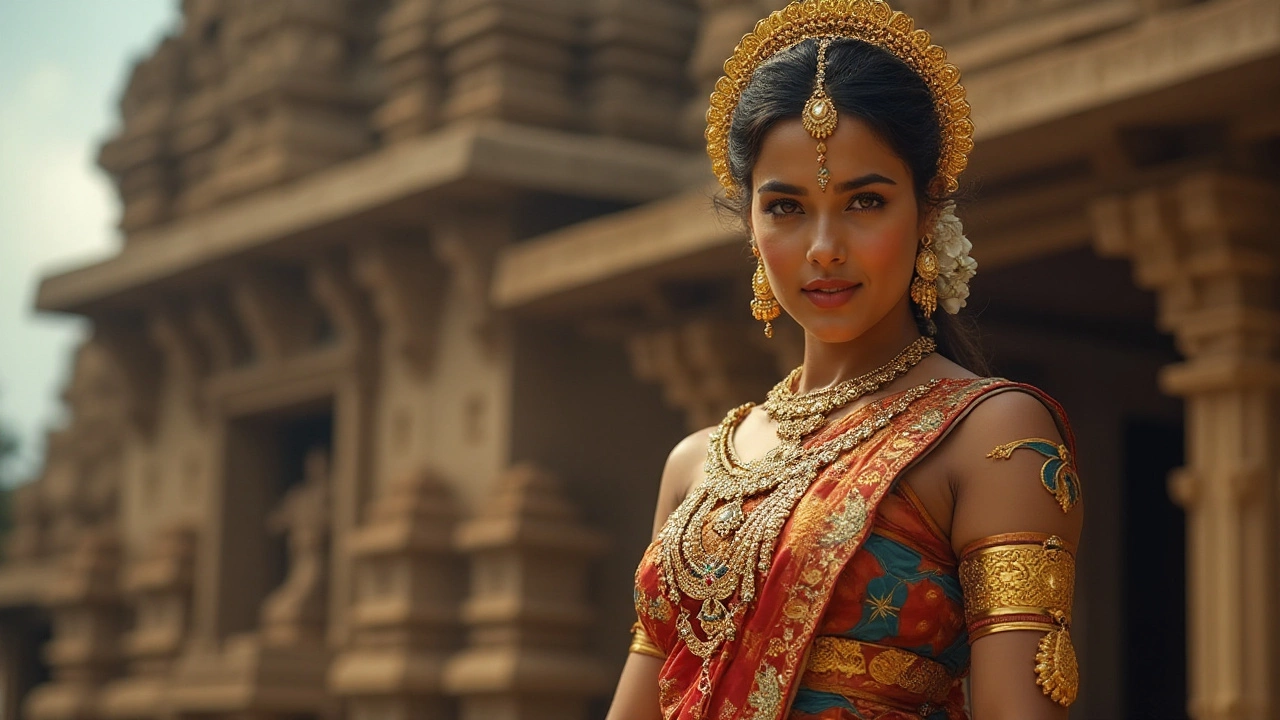
Temple jewelry is a traditional form of Indian adornment, characterized by its rich designs and cultural significance. Originating in Southern India during the Chola dynasty, these pieces were initially crafted for deities and later adorned by dancers and royalty. Known for intricate gold work and the inclusion of precious gems, temple jewelry holds a special place in Indian culture today. This article explores its history, design, significance, and how it remains a living tradition in modern times.
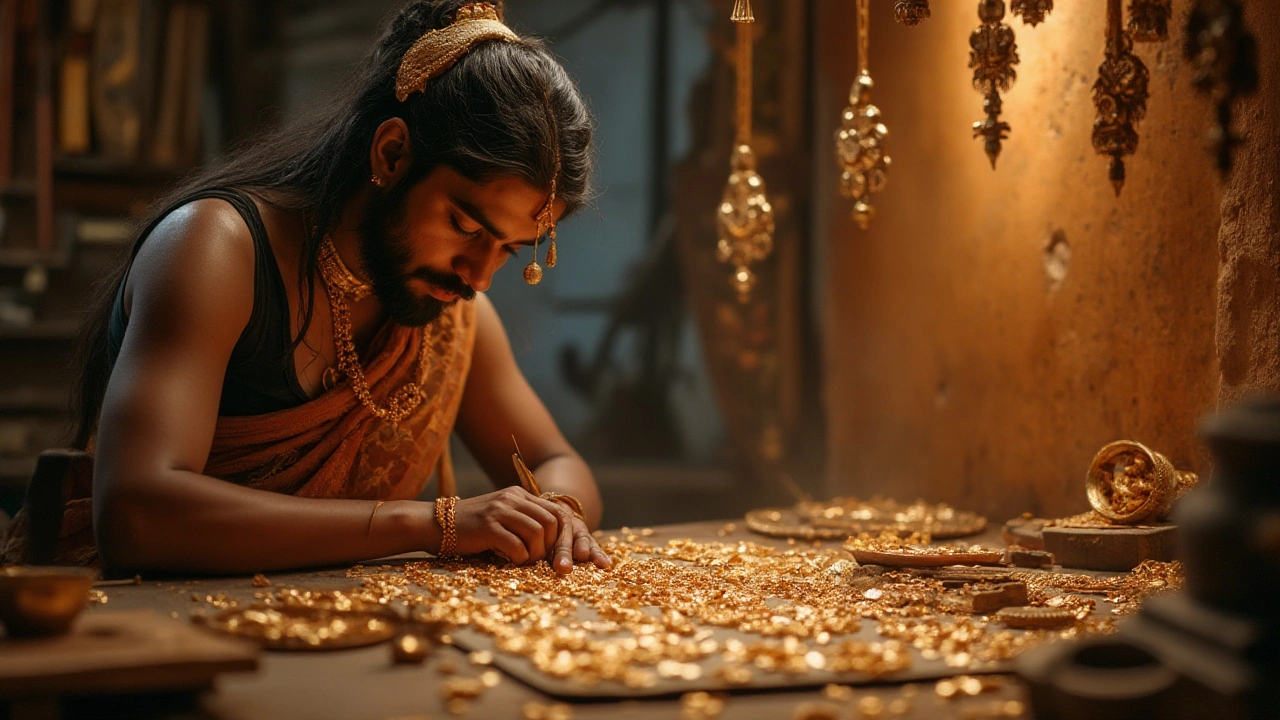
Indian temple jewelry is renowned for its rich, golden hue that reflects the historical and cultural significance of the region. This article explores the reasons behind its distinctive yellow shade, tracing its roots to traditional practices and craftsmanship. With a focus on materials used and cultural influences, readers can gain insights into how this exquisite jewelry remains an enduring symbol of heritage and spirituality.